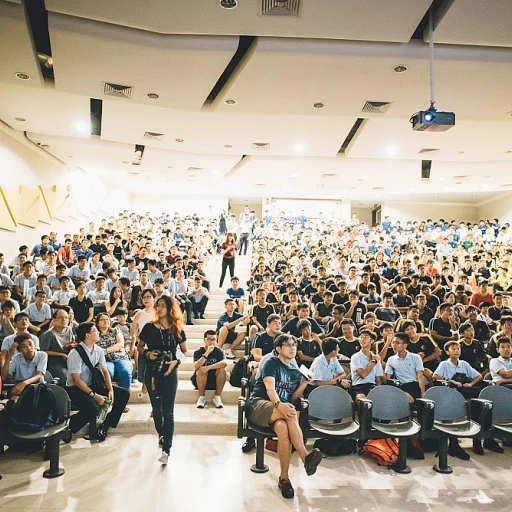The Concept of Average Office Size
Defining the Average Office Space
When it comes to understanding office space in Indian companies, the concept of average office size plays a pivotal role. The average office space is often determined by various factors, including the number of employees, the nature of the business, and the company's growth projections. Typically, the standard office size is calculated in square feet per employee, with a focus on balancing private offices and shared spaces.
In India, office layouts have evolved over the years, with a noticeable shift towards open plan offices. This change is driven by the need for collaboration and flexibility, allowing employees to work in an environment that fosters communication and innovation. However, the average size of an office still depends largely on the industry and the specific needs of the company.
For instance, tech companies might prioritize open spaces and shared areas to enhance teamwork, while more traditional businesses may focus on private offices and meeting rooms. The standard office size can vary significantly, but a general guide suggests around 100 to 150 square feet per person in a typical workplace. This includes common areas, conference rooms, and other necessary facilities.
Moreover, as companies plan for future growth, they must consider how the average office size will accommodate additional employees. This involves strategic space planning and optimization to ensure that the office remains functional and efficient. For those looking to delve deeper into effective strategies in managing office space and project management, exploring effective strategies in power project management could provide valuable insights.
Cultural and Regional Influences
Influences Shaping Office Designs Across Regions
Indian office spaces are a reflection of the diverse cultural and regional influences that shape them. The office design is not just about functional needs but also mirrors the tapestry of traditions, values, and socio-economic factors unique to each area.
In bustling cities, there's a trend toward maximizing space productivity in a limited square footage. Here, the concept of an open plan design helps accommodate more employees in a smaller area, encouraging collaboration. Private offices are becoming shared spaces to adjust for average office size requirements.
Meanwhile, in areas with more available square feet, companies can afford to have more private offices and dedicated meeting rooms. The balance between standard comfort and effective workplace dynamics varies, reflecting local business practices and priorities.
Translating cultural nuances into office designs means including features like natural light and common areas to promote a healthy work-life balance. Spaces might be influenced by traditional architecture, using elements like walls and rooms strategically to blend modernity with regional motifs.
Adapting to the space requirements and working habits of employees is crucial for office managers. Understanding these cultural and regional dynamics is essential when planning for present needs and future growth, ensuring that office layouts meet evolving business and employee expectations.
Space Optimization Strategies
Maximizing Office Efficiency
In the quest for the ideal office space, Indian companies are increasingly focusing on space optimization strategies. With the average office size being a critical factor, businesses are exploring innovative ways to make the most of every square foot. This involves a careful balance between private offices and shared spaces, ensuring that employees have the right environment to thrive.
One key strategy is the adoption of open plan layouts, which can significantly enhance collaboration and communication among employees. However, it's essential to maintain a balance by providing private offices or quiet areas for tasks requiring intense concentration. Meeting rooms and conference rooms should be strategically placed to minimize disruption and maximize accessibility.
Another approach is the efficient use of common areas. These spaces can serve multiple purposes, from informal meetings to relaxation zones, contributing to a more dynamic workplace. Incorporating natural light and flexible furniture can also enhance the overall atmosphere, making the office a more pleasant place to work.
For office managers, understanding the office standard and adapting to the specific space requirements of their company is crucial. This includes considering future growth and ensuring that the office space can accommodate changes in team size or structure.
In conclusion, optimizing office space is not just about fitting more desks into a room. It's about creating an environment that supports productivity and well-being, aligning with cultural and regional influences, and leveraging technological advancements to enhance the workplace experience.
Technological Impact on Office Space
Incorporating Technology for Modern Office Dynamics
The influence of technology on office space is both profound and transformative, reshaping traditional norms in Indian companies. Technological advancements have shifted the workplace from merely a physical location to a more integrated, dynamic environment. Here's how technology plays a pivotal role in optimizing office areas:- Digitalization of Workspaces: With the rise of digital tools and cloud computing, the necessity for large private offices and paper storage has diminished. This digital transformation allows companies to reduce their average office size while still maintaining efficiency. Common areas can be enhanced with integrated tech solutions, driving seamless collaboration.
- Adoption of Smart Technologies: The use of smart office technologies, like IoT for monitoring space utilization, has become a standard in the industry. These systems help office managers understand and optimize space consumption in real-time, ensuring each square feet is effectively used. For instance, sensors can track meeting room usage, aiding in the design of better office layouts and ensuring meeting spaces are neither underutilized nor overbooked.
- Flexible and Multifunctional Spaces: Advances in technology have enabled office spaces to become more adaptable. Movable walls and modular office layouts allow transformation between open work areas and private zones based on daily requirements. This flexibility supports a variety of work styles—be it private office tasks or collaborative team efforts.
- Facilitating Remote and Hybrid Work: As remote work becomes more prevalent, office space design must accommodate this shift. The integration of video conferencing tools in conference rooms, along with shared workstations for employees who only occasionally work on-site, optimizes the use of office space. This adaptation allows companies to meet their short-term needs while planning for future growth.
Challenges for Office Managers
Overcoming Space Management Hurdles
Office managers in Indian companies face a unique set of challenges when it comes to managing office space. The average office size can vary significantly, influenced by cultural and regional factors. As a result, office managers must be adept at adapting their strategies to suit different environments and expectations.
One of the primary challenges is balancing the need for private offices with the trend towards open plan layouts. While open spaces encourage collaboration and communication, they can also lead to distractions, affecting employee productivity. Office managers must find the right mix of private and shared spaces to meet diverse needs.
Another hurdle is optimizing the use of available square footage. With space often at a premium, especially in urban areas, managers must ensure that every square foot is utilized effectively. This involves creating multi-functional areas that can serve as meeting rooms, conference rooms, or even breakout spaces, depending on the need.
Moreover, maintaining an office standard that accommodates future growth is crucial. This requires careful planning and a forward-thinking approach to office layouts. Managers need to consider not just the current space requirements but also potential expansion needs.
In addition, providing a comfortable and appealing workplace is essential for employee satisfaction. This includes ensuring access to natural light, creating inviting common areas, and maintaining an appropriate feet-per-person ratio to avoid overcrowding.
Finally, office managers must navigate the complexities of technological integration. As discussed earlier, technology plays a significant role in shaping modern office spaces. Managers need to ensure that the office infrastructure supports the latest technological advancements, which can sometimes require significant adjustments to existing layouts.
By addressing these challenges, office managers can create a dynamic and efficient work environment that not only meets current needs but also adapts to future demands.
Future Trends in Office Space Planning
Emerging Trends in Office Space Design
As we look towards the future, office spaces in India are evolving to meet the dynamic needs of businesses and employees. The traditional office layouts are giving way to more flexible and adaptive environments. Here are some key trends that office managers should keep an eye on:
- Flexible Workspaces: The demand for flexible office space is on the rise. Companies are increasingly opting for open plan designs that allow for easy reconfiguration. This trend supports a more collaborative and dynamic work environment.
- Emphasis on Well-being: There is a growing focus on employee well-being, with office designs incorporating natural light, green spaces, and ergonomic furniture. These elements contribute to a healthier and more productive workplace.
- Technology Integration: As discussed earlier, technology continues to play a crucial role in shaping office spaces. Smart office solutions, such as IoT devices and advanced conference rooms, are becoming standard to enhance productivity and connectivity.
- Sustainability: Environmentally friendly designs are gaining traction. Companies are adopting sustainable practices, from using energy-efficient lighting to incorporating recycled materials in their office layouts.
- Hybrid Work Models: With the rise of remote work, hybrid models are becoming more prevalent. Offices are being designed to accommodate both in-person and remote employees, ensuring that meeting rooms and shared spaces are equipped for virtual collaboration.
Office managers must stay informed about these trends to ensure their workplaces remain competitive and attractive to current and future employees. By understanding the evolving landscape of office space planning, managers can better guide their companies in creating effective and innovative work environments.











